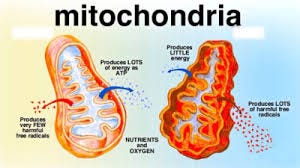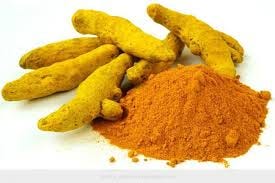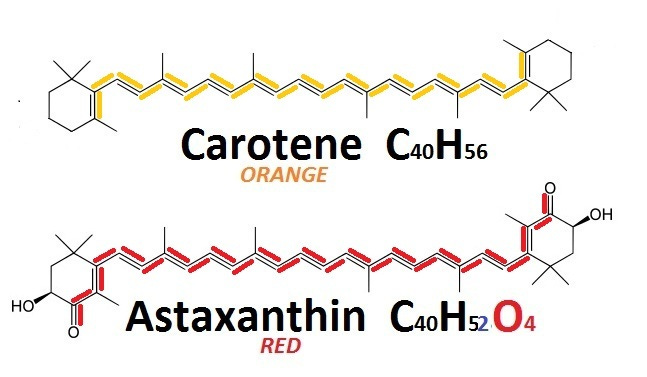COGNITIVE DECLINE: Are you CONCERNED?
COVID19, Aging, Trauma, Pollution & Natural Product Approaches
This is such a massive subject, one that a single newsletter article will not do it justice. Apologies if this seems limited, but I assure you it is a theme that I will return to frequently as scientific advancements dictate. Consider this an appetizer to wet your desire for more information.
If we had thought the problem was massive before, based on aging demographics and limited resources allocated to elderly care, then the SARS-CoV-2 pandemic has taken it to a new level. The BRAIN FOG that COVID19 sufferers experience has all the attributes of cognitive decline that may reflect a diversity of other drivers (Dementia & COVID19). Furthermore, COVID19 brain fog is now influencing the health of a much younger age group. The issue, COGNITIVE HEALTH, is not merely a problem of the elderly but a much broader age group, and that includes CTE (Chronic Traumatic Encephalopathy) in sports.
While the origins of cognitive decline may be quite diverse - age, lifestyle, sports, sleep apnea, infections, cardiovascular compromise (ischemia, lipids) and even dietary elements like aluminum consumption and the burden of pollution, we now have a better idea of the processes that drive the outcomes. With that knowledge we can focus on prevention and therapies.
DISEASE DRIVERS
Dietary Aluminum
One dietary component that has been discussed at length is the ingestion of aluminum (Aluminum and Alzheimers). Researchers noted significantly higher levels of aluminum in brain tissues in donors with familial Alzheimer's disease than in control tissues from donors without neurological impairment or neurodegeneration. Using highly sensitive visualization techniques they were able to demonstrate a very high degree of co-localization of these two risk factors in brain tissue in familial Alzheimer's disease. Aluminum and amyloid-β were co-located in senile plaques as well as vasculature, the latter resembling cerebral amyloid angiopathy. Aluminum was also found separately from amyloid-β in intracellular compartments including glia and neuronal axons. Similar co-localization results were noted in neurofibrillary tangles in familiar Alzheimer’s Neurofibrillary tangles & Alzheimer's
Inflammation & Oxidative Stress
This broad category truly covers many of the other drivers as it represents the biochemical pathways that drive tissue damage. You will note that oxidants, free radicals and their ability to promote inflammation through redox driven gene switches are at the forefront of many disease processes, but in the brain it is registered as cognitive decline (Gulf War Illness & Cognition, Oxidative stress & Alzheimer's).
Putative interventions often include actions on this central & critical driver.
Mitochondrial Dysfunction & Mitophagy
Mitochondria are the sources of cellular energy, ATP is the currency, and it is generated by burning fuel (carbs, lipids and amino acids) in a series of reactions that generates 4 free radicals. Sort of like nuclear fuel, it can be effective in creating energy but when it is dysfunctional and it leaks, then we have trouble. In cognitive decline in its many forms we have just that, leaking mitochondria that drives an oxidative stress, inflammation (Mitochondria & Cognitive Decline).
Old powerhouses that should be taken offline and replaced are not. That is a condition known as mitophagy, where cells clean up, digest, remove and replace damaged mitochondria. When it is whole cells going through this process it is called autophagy.
We must consider Memory Loss & Cognitive Decline as a Mitochondrial Problem.
The conditions which are associated with mitochondrial dysfunction are diverse which is in part why a single cause of memory loss, dementia and cognitive decline is not apparent (Diabetes, Mitochondria & Cognition Mitochondria & Alzheimer's). Further, other brain diseases like Parkinson’s Disease reflect neuronal loss through similar mechanisms (Parkinson's Disease & Mitochondria PINK1, Mitochondria & Parkinsons).
Pollution & Memory Loss
Increasingly we appreciate the role of pollution especially air pollution as a cause of reduced lifespans. However, it is also a driver of cognitive decline, with physical proximity to traffic being a major risk factor (Air Pollution from Traffic & Alzheimer's). It is likely that the current standards for Particulate Matter are inadequate and need to be lowered to negate their contribution to declining brain function in those that are nearby. Mechanisms may relate to metals from braking causing brain inflammation as well as loss of the integrity of the vascular Blood Brain Barrier (BBB). Here convergence with other risk factors can exacerbate the problem (Traffic, BBB and Cognition)
The other types of mediators of concern that are present in pollution are nitrogen oxides. These are the brown gases, NO2 and N2O3, that arise when nitric oxide interacts with oxygen. This link is of great interest is that the same chemistry is evident when excess nitric oxide is produced in the body. This occurs when the body is fighting cancer or an infection. Of pertinent interest here is COVID19.
The other critical feature is that this reaction (2NO + O2 forming 2NO2) is accelerated 360x in lipid environments as both NO and O2 are more soluble in lipids as I discovered some years back (SMOG in lipids from NO & O2) Nerves and myelin sheaths are lipid rich, meaning that these dangerous nitrating and nitrosating chemicals species that give smog its brown color are also being produced en masse in the brain. Hence the dementia that is seen with air pollution and infections like COVID19 may reflect the same chemistry albeit arising from different origins.
BRAIN FOG may actually be better termed BRAIN SMOG, because the same chemistry drives the pathology.
POTENTIAL NATURAL THERAPIES WITH SUPPORTIVE SCIENCE
CURCUMIN
There are many attributes of curcumin that make it exceptionally attractive as natural product to be considered for brain health maintenance. But before I detail some of the reasons why that is true, let me take the time that in order for it to be effective it must be absorbed when ingested. Curcuminoids are derived from the spice turmeric, but merely ingesting turmeric is NOT ENOUGH. In this form it has dreadful bioavailability to the point that turmeric by itself cannot be relied upon. The solution is to use a form that has clinical evidence of enhanced bioavailability. Excellent examples are BCM-95 and Biosolve Curcumin, amongst a number of others.
These highly bioavailable forms solve the problem of getting absorbed from the gut and into the blood stream. Curcumin being lipid soluble and relatively small, is able to cross the BBB so it can enter the brain. The modifications that accompany enhanced bioavailability may also lengthen the time in plasma presumably by slowing metabolic degradation. Results are sufficiently encouraging to the point that Arjuna (BCM-95) has received a patent to investigate their form of curcumin in Alzheimer’s disease (BCM95 Patent for Alzheimer's).
Curcumin brings a lot to the table for brain health, including
Sequesters aluminum and thereby limits its neurotoxicity (Al & Curcumin)
Suppresses inflammation by limiting oxidative stress related activation of gene switches
Crosses the BBB to enter the brain (access is important)
Protects mitochondria (Curcumin & Mitochondria)
Linked to reduced oxidative stress & inflammation is lowered cytokine levels, particularly IL-6 and GM-CSF (IL-6 & Curcumin, GM-CSF & Curcumin) that are also linked to outcomes in COVID19 (IL-6, GM-CSF & COVID19). All of which is also consistent with the ability of curcumin to limit inflammation in other sites (Curcumin & arthritis , Biosolve Curcumin and RA)
Vascular actions that limit oxidized lipoproteins (Oxidative Stress, TGs & Curcumin)
CAT’S CLAW
I have discussed some of the truly fascinating research on Cat’s claw in another newsletter, focusing on a therapeutic action (dissolving plaques and untangling tau protein complexes) and the critical research that I did over the last 3 decades on its ability to suppress NF-kB, the master gene switch for chronic inflammation. Please let me refer you back to that newsletter for more details (Amazon Rainforest & Memory Decline)
ASTAXANTHIN
Another natural product that I often comment on is the orange-red colored xanthophyll (carotenoid) called astaxanthin (Why are Salmon Pink - A Fable Inspired by Rudyard Kipling). A chemical cousin of lutein, zeaxanthin, vitamin E and beta-carotene, astaxanthin is the most potent free radical scavenger known. There is a considerable literature on the potential of astaxanthin to better manage memory, cognition (Marine Natural Products & Alzheimer's, Astaxanthin & neurodegeneration) and also, unsurprisingly to the inflammation with COVID19 (COVID19 & Astaxanthin)
Attributes of astaxanthin include:
Readily crosses the BBB and the Blood Retinal Barrier
It is 6000x more potent as an antioxidant than Vitamin C and is pure in this action in that it never behaves as a pro-oxidant
Forms trans-membrane bridges, protecting membrane function by capturing lipid based free radicals (think of a fishing net that crosses from one bank of the river to other. No fish (free radicals can escape).
By limiting oxidative stress it lowers inflammation through suppression of NF-kB and the thousands of genes that it controls
It also activates Nrf2 (the flip side of NF-kB, or for those that like super heroes - Superman vs General Zod) to promote repair (Nrf2 and Astaxanthin)
Stimulates the production of endogenous defenses to oxidative stress eg SOD linked to the Nrf2 activation
Remarkably effective mitochondrial nutrient, protecting mDNA and tissues from free radical leaks & activates the generation of new healthy mitochondria
Promotes autophagy and mitophagy to eliminate damaged mitochondria and cells. This action is linked to enhanced lifespan noted in lower species (LIfespan of nematodes with astaxanthin)
SPERMIDINE
A relative newcomer to aging research, but especially for actions on cognition is the polyamine, spermidine. Named for the discovery that it is present in high levels in semen (scientists do not always make the best marketers), Spermidine is ubiquitous in the body but whose dietary sources is limited. Wheat germ is one of the best sources.
The truly compelling research on spermidine is on lifespan and quality of life. These issues were recently discussed in a LinkedIn post and a related NutraIngredients-USA article (Spermidine and LIfespan). The encouraging connection is its ability to promote autophagy and mitophagy. Further, decades long studies that recorded blood levels of spermidine, noted that the difference in longevity between high levels and low levels was 5.7 years. Not an insignificant difference. Longevity with a high quality of life is the ultimate goal - a long HEALTHSPAN.
CONCLUSION
Dementia, Cognitive Decline and Alzheimer’s Disease are devastating societal burdens. We need to seek preventative strategies based on understanding the multitude of initiators. To that list, sadly it seems that the current pandemic with COVID19 will add to the burden. Not covered in this newsletter would be the potential benefits of a healthy microbiome. That field is growing rapidly and undoubtedly will be a fertile area for interventions.
While many turn to pharmaceuticals for the answers, although the magnitude of benefits seen with recently approved drugs combined with their costs raise serious doubts as to their societal applicability (New Drug for Alzheimer's BUT should you take it?). That raises the question at hand. Can we include natural products, approaches with solid, defined clinical benefits and clear mechanisms of action as part of our tools to manage the problem?
I hope there is some persuasive evidence in this brief newsletter to suggest that there is indeed promise. Keep informed and make good decisions.








